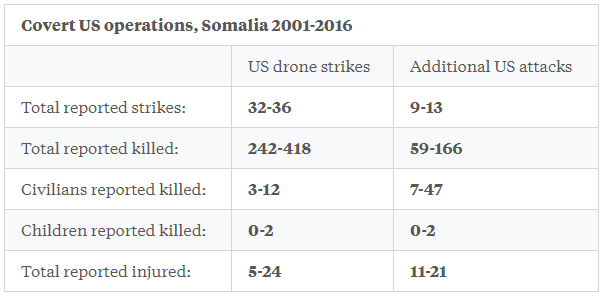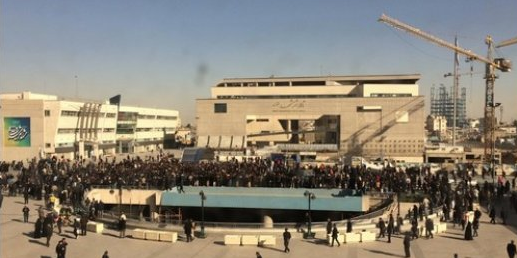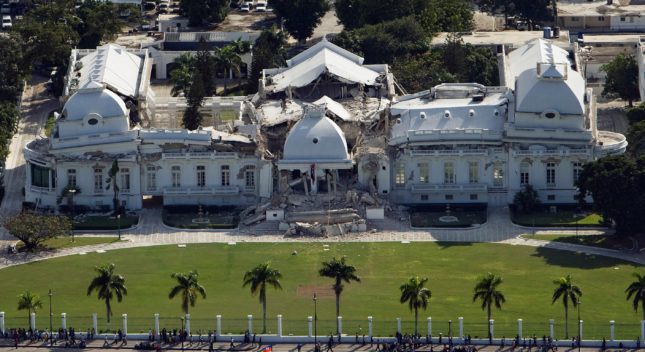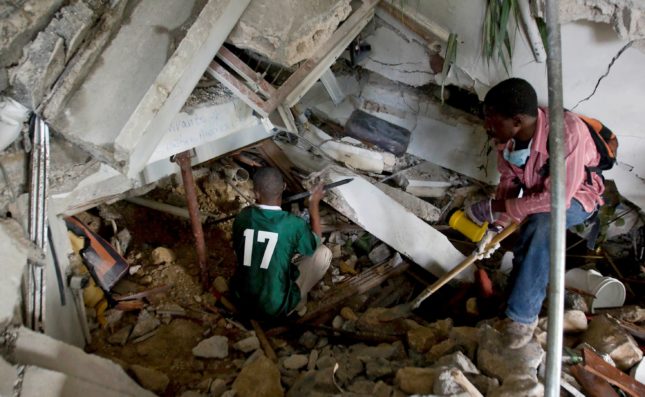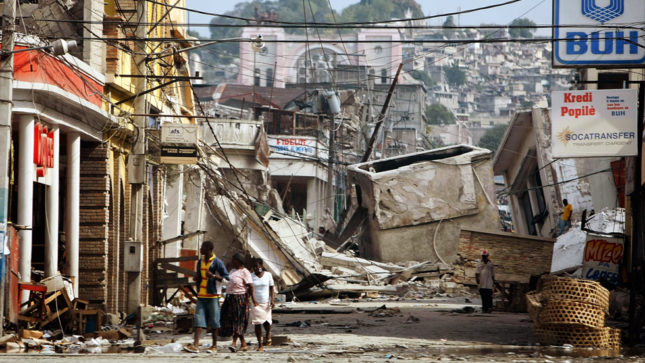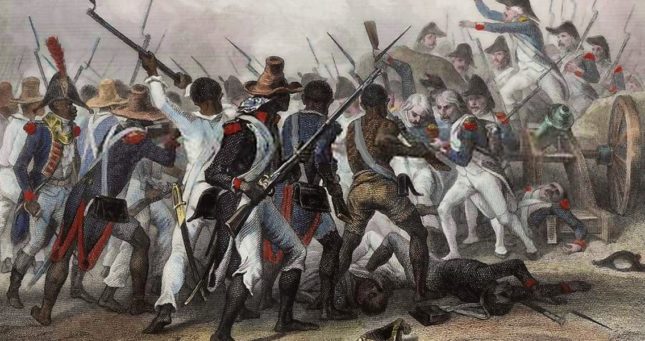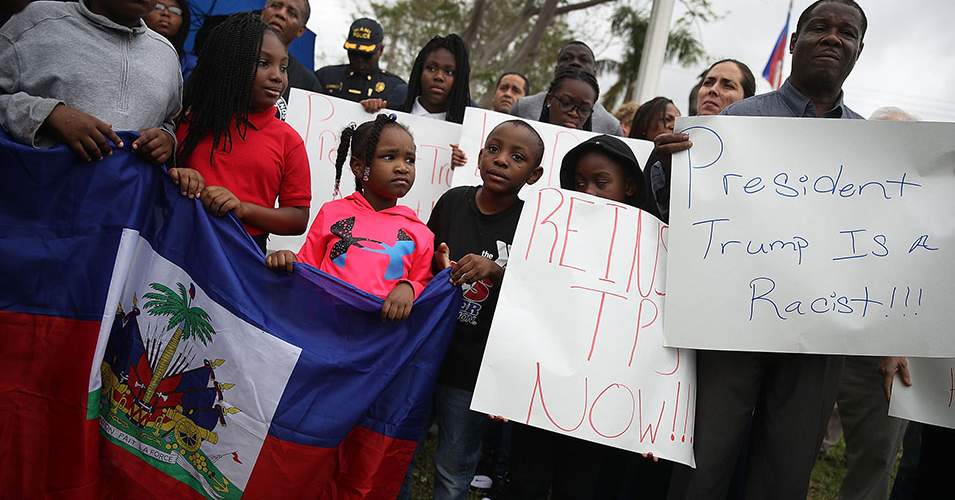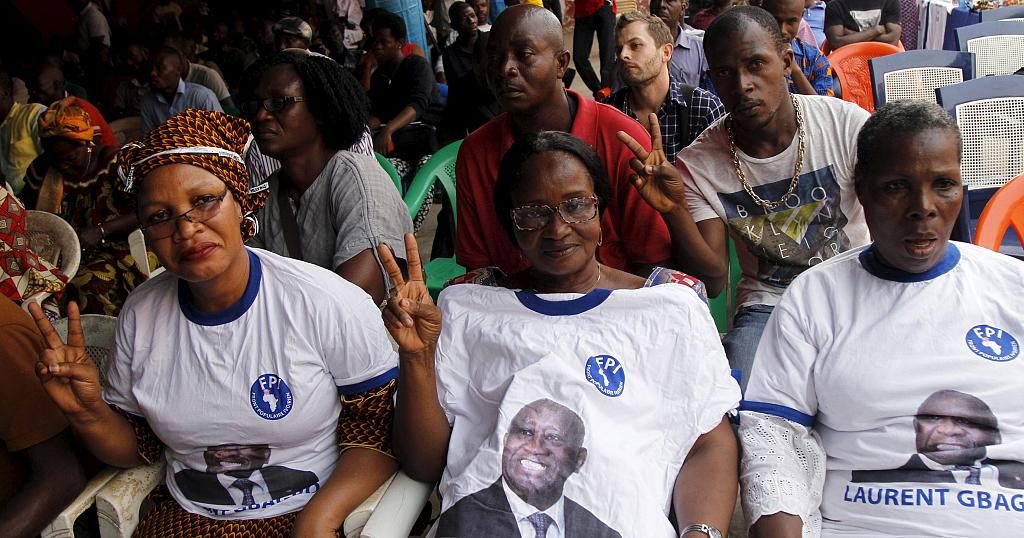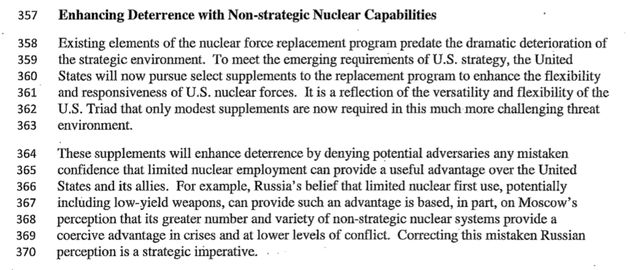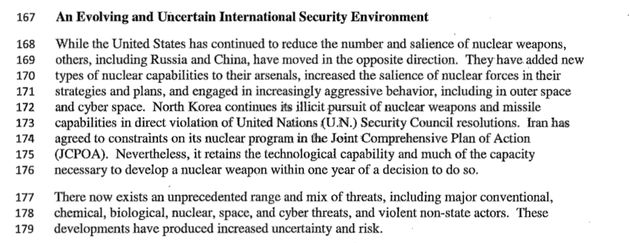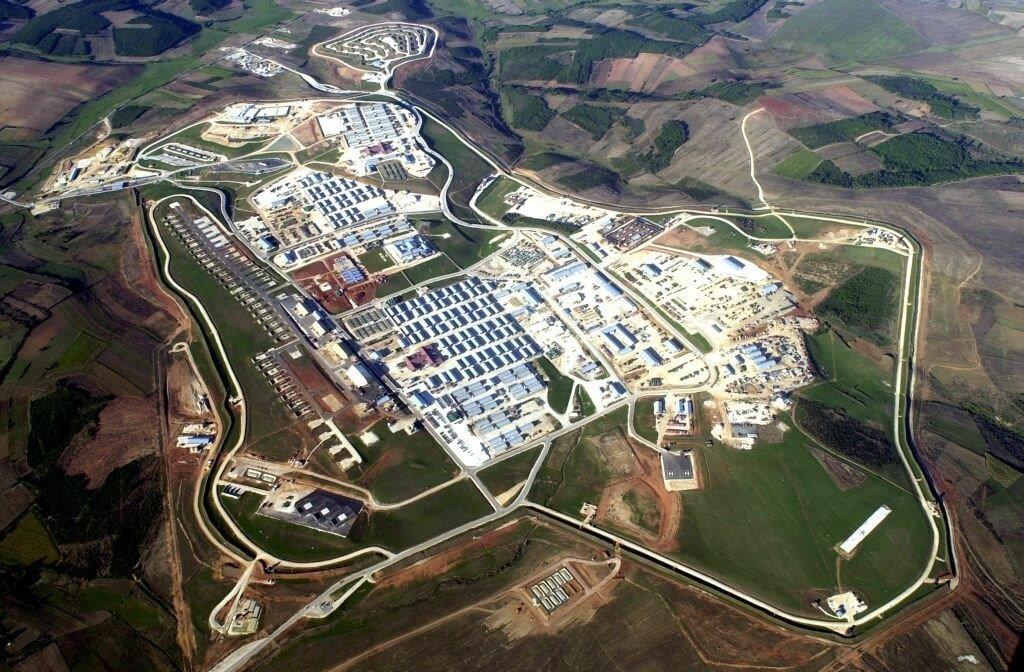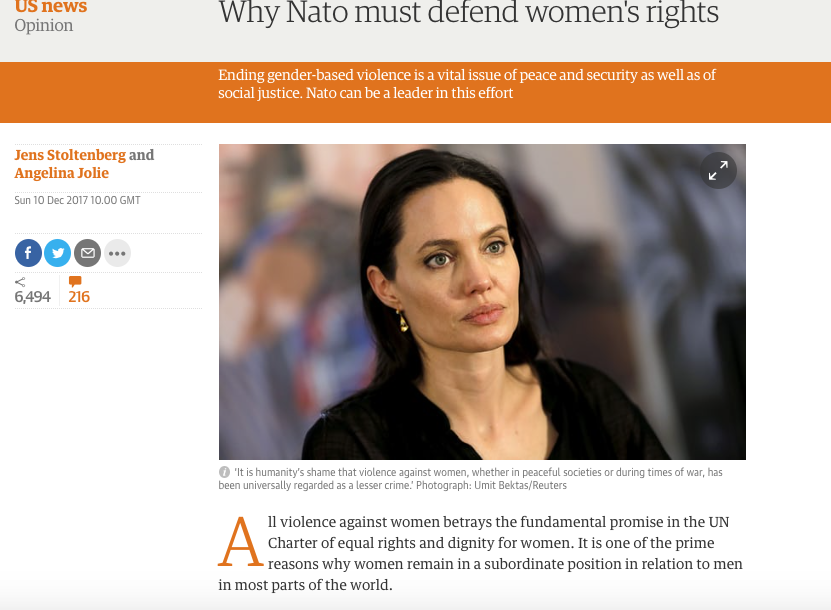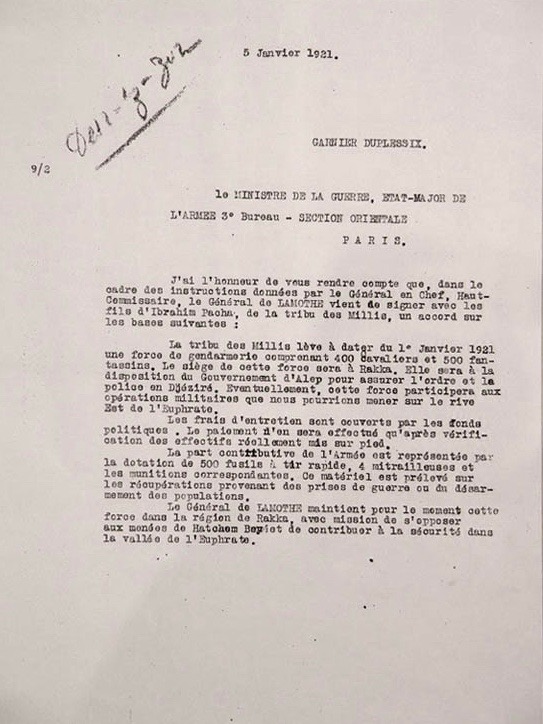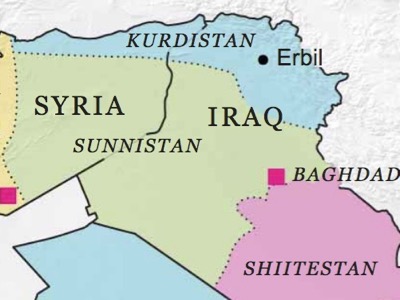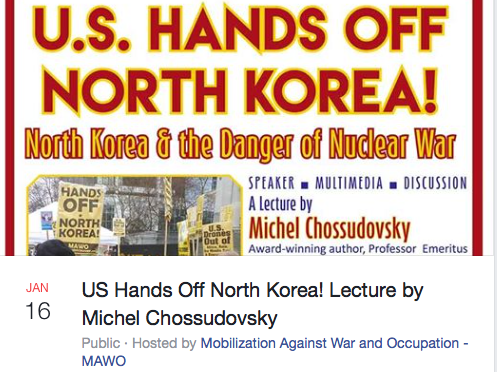William Penn Jones Jr. was an American journalist, the editor of the Midlothian Mirror and author. He was also one of the earliest John F. Kennedy assassination conspiracy theorists. Jones attended the University of Texas at Austin and was a classmate of Henry Wade and John Connally. Wade later become the District Attorney in Dallas while Connolly would later become the 39th Governor of Texas. Both men were figures in the assassination of JFK.
In 1946, Jones purchased the Midlothian Mirror for $4,000; he eventually sold the newspaper in 1974. In 1963, Penn received the Elijah Lovejoy Award for Courage in Journalism.
Jones was also known for being an early critic of the Warren Commission‘s report on the assassination of JFK. In 1967, he self-published Forgive My Grief, a four-volume work on the assassination of President Kennedy. In the 1980s, Jones co-edited The Continuing Inquiry newsletter with Gary Mack of the Sixth Floor Museum at Dealey Plaza.
On January 25, 1998, Jones died of Alzheimer’s disease in a Alvarado, Texas nursing home at the age of 83.
In January 1983 Rebel Magazine published an article written by Jones, which is republished in full, with no editing below (except images). The JFK assassination was one of the biggest events to have ever hit America and Jones assumes that the reader of the time would have known quite a bit about it. This article makes for fascinating reading whether you believe the official state narrative or alternative theories. Last October, Statista concluded from surveys that 61 percent of Americans believe JFK was not killed by Oswald alone and that others were involved.
Over 100 murders, suicides, mysterious deaths – the strange fate of those who saw Kennedy shot.
By Penn Jones Jr.
Rebel Magazine, 1983
Shortly after dark on Sunday night November 24, 1963, after Ruby had killed Lee Harvey Oswald, a meeting took place in Jack Ruby’s apartment in Oak Cliff, a suburb of Dallas, Texas. Five persons were present. George Senator and Attorney Tom Howard were present and having a drink in the apartment when two newsmen arrived. The newsmen were Bill Hunter of the Long Beach California Press Telegram, and Jim Koethe of the Dallas Times Herald. Attorney C.A. Droby of Dallas arranged the meeting for the two newsmen. Jim Martin, a close friend of George Senator’s, was also present at the apartment meeting.

This writer asked Martin if he thought it was unusual for Senator to forget the meeting while testifying in Washington on April 22, 1964, since Bill Hunter, who was a newsman present at the meeting, was shot to death that very night. Martin grinned and said: “Oh, you’re looking for a conspiracy.”
I nodded yes and he grinned and said, “You will never find it.”
I asked soberly, “Never find it, or not there?”
He added soberly, “Not there.”
Bill Hunter, a native of Dallas and an award winning newsman in Long Beach, was on duty and reading a book in the police station called “Public Safety Building.” Two policemen going off duty came into the press room, and one policeman shot Hunter through the heart at a range officially ruled to be “no more than three feet.” The policeman said he dropped his gun, and it fired as he picked it up, but the angle of the bullet caused him to change his story. He finally said he was playing a game of quick draw with his fellow officer. The other officer testified he had his back turned when the shooting took place.
Hunter, who covered the assassination for his paper, the Long Beach Press Telegram, had written:
“Within minutes of Ruby’s execution of Oswald, before the eyes of millions watching television, at least two Dallas attorneys appeared to talk with him.”
Hunter was quoting Tom Howard who died of a heart attack in Dallas a few months after Hunter’s own death. Lawyer Tom Howard was observed acting strangely to his friends two days before his death. Howard was taken to the hospital by a “friend” according to the newspapers. No autopsy was performed.
Dallas Times Herald reporter Jim Koethe was killed by a karate chop to the throat just as he emerged from a shower in his apartment on September 21, 1964. His murderer was not indicted.
What went on in that significant meeting in Ruby’s and Senator’s apartment?
Few are left to tell. There is no one in authority to ask the question, since the Warren Commission has made its final report, and The House Select Committee has closed its investigation.

Journalist Dorothy Kallagan’s mobster tell-all article may have got her killed – read the NY Post article HERE
Dorothy Kilgallen was another reporter who died strangely and suddenly after her involvement in the Kennedy assassination. Miss Kilgallen is the only journalist who was granted a private interview with Jack Ruby after he killed Lee Harvey Oswald. Judge Joe B. Brown granted the interview during the course of the Ruby trial in Dallas–to the intense anger of the hundreds of other newspeople present.
We will not divulge exactly what Miss Kilgallen did to obtain the interview with Ruby. But Judge Brown bragged about the price paid. Only that was not the real price Miss Kilgallen paid. She gave her life for the interview. Miss Kilgallen stated that she was “going to break this case wide open.”
She died on November 8, 1965. Her autopsy report took eight days. She was 52 years old. Two days later Mrs. Earl T. Smith, a close friend of Miss Kilgallen’s died of undetermined causes.
Tom Howard, who died of a heart attack, was a good friend of District Attorney Henry Wade, although they often opposed each other in court. Howard was close to Ruby and other fringes of the Dallas underworld.
Like Ruby, Howard’s life revolved around the police station, and it was not surprising when he and Ruby (toting his gun) showed up at the station on the evening of the assassination of President Kennedy. Nor was it unusual when Howard arrived at the jail shortly after Ruby shot Oswald, asking to see his old friend.
Howard was shown into a meeting room to see a bewildered Ruby who had not asked for a lawyer. For the next two days–until Ruby’s brother, Earl, soured on him, and had Howard relieved–he was Jack Ruby’s chief attorney and public spokesman.
Howard took to the publicity with alacrity, called a press conference, wheeled and dealed. He told newsmen the case was a “once-in-a-lifetime chance,” and that “speaking as a private citizen,” he thought Ruby deserved a Congressional medal. He told the Houston Post that Ruby had been in the police station Friday night (November 22, 1963) with a gun. Howard dickered with a national magazine for an Oswald murder story. He got hold of a picture showing the President’s brains flying out of the car, and tried to sell it to Life magazine. Ruby’s sister, Eva Grant, even accused Howard of leaking information to the DA. It was never quite clear whether Howard was working for Ruby or against him.
On March 27, 1965, Howard was taken to a hospital by an unidentified person and died there. He was 48. The doctor, without benefit of an autopsy, said he had suffered a heart attack. Some reporters and friends of Howard’s were not so certain. Some said he was “bumped off.”
Earlene Roberts was the plump widow who managed the rooming house where Lee Harvey Oswald was living under the name O. H. Lee. She testified before the Warren Commission that she saw Oswald come home around one o’clock, go to his room for three or four minutes and walk out zipping his light weight jacket. A few minutes later, a mile away, officer J. D. Tippit was shot dead.
Mrs. Roberts testified that while Oswald was in his room, two uniformed cops pulled up in front of the rooming house and honked twice–“Just tit tit,” she said.
The police department issued a report saying all patrol cars in the area, except Tippit’s, were accounted for. The Warren Commission let it go at that.
After testifying in Dallas in April 1964, Mrs. Roberts was subjected to intensive police harassment. They visited her at all hours of the day and night. Earlene complained of being “worried to death” by the police. She died on January 9, 1966 in Parkland Hospital (the hospital where President Kennedy was taken). Police said she suffered a heart attack in her home. No autopsy was performed.

Warren Reynolds being interviewed about the scene of a killing but was not sure about the FBI story he was given – to his cost
Warren Reynolds was minding his used car lot on East Jefferson Street in Oak Cliff in Dallas, when he heard shots two blocks away. He thought it was a marital quarrel. Then he saw a man having a great difficulty tucking “a pistol or an automatic” in his belt, and running at the same time. Reynolds gave chase for a short piece being careful to keep his distance, then lost the fleeing man. He didn’t know it then, but he had apparently witnessed the flight of the killer (or one of the killers) of patrolman Jefferson David Tippit. Feeling helpful, he gave his name to a passing policeman and offered his cooperation. Television cameras zeroed in on him, got his story, and made him well known. Warren Reynolds, the amiable used car man, was making history.
Reynolds was not questioned until two months after the event. The FBI finally talked to him in January 1964.
The FBI interview report said, ” . . . he was hesitant to definitely identify Oswald as the individual.” Then it added, “He advised he is of the opinion Oswald is the person.”
Two days after Reynolds talked to the FBI, he was shot in the head. He was closing up his used car lot for the night at the time. Nothing was stolen. Later after consulting retired General Edwin Walker (the man Oswald allegedly shot at before he assassinated President Kennedy), he told the Warren Commission Counsel that Oswald was definitely the man he saw fleeing the Tippit murder scene.
A young hood was arrested for the murder attempt. Darrell Wayne Garner had called a relative bragging that he shot Reynolds. But Garner had an alibi, Nancy Jane Mooney, alias Betty McDonald, who said Garner was in bed with her at the time he was supposed to have shot Reynolds. Nancy Jane had worked at Jack Ruby’s Carousel Club. Garner was freed.
Nancy Jane was picked up a week later for fighting with a girlfriend. She was arrested for disturbing the peace. The girlfriend was not arrested. Within hours after her arrest, Nancy Jane was dead. Police reports said she hanged herself with her toreador pants.
Reynolds and his family were harassed and threatened. But upon giving the Warren Commission a firm identification of Oswald as being the Tippit murder fugitive, he said,
“I don’t think they are going to bother me any more.”

Hank Killam’s jugular vein was cut and bled to death attempting to get to hospital
Hank Killam was a house painter who lived at Mrs. A.C. Johnson’s rooming house at the same time Lee Harvey Oswald lived there. His wife, Wanda, once pushed cigarettes and drinks at Jack Ruby’s club.
Hank was a big man, over six feet and weighing over 200 pounds. After the assassination, federal agents visited him repeatedly causing him to lose one job after another.
Killam was absorbed by the assassination, even obsessed. Hours after the event, he came home, “white as a sheet.” Wanda said he stayed up all night watching the television accounts of the assassination. Later he bought all the papers and clipped the stories about Kennedy’s death.
Before Christmas, Killam left for Florida. Wanda confessed where he was. Federal agents hounded him in Tampa, Florida where he was working selling cars at his brother-in-law’s car lot. He lost his job.
Killam wrote Wanda that he would be sending for her soon. He received a phone call on St. Patrick’s day. He left the house immediately. He was found later on a sidewalk in front of a broken window. His jugular vein was cut. He bled to death en route to the hospital.
There is no mention of Killam by the Warren Commission. A number of FBI documents on Killam relating to the assassination were withheld, along with documents prepared by the CIA. What is clear is that SOMEBODY considered Hank Killam a very important guy.
William Whaley was known as the “Oswald Cabbie.” He was one of the few who had the opportunity to talk alone with the accused killer of President Kennedy. He testified that Oswald hailed him at the Dallas Greyhound bus station. Whaley said he drove Oswald to the intersection of Beckley and Neches–half a block from the rooming house–and collected a dollar. Later he identified Oswald as his fare in a questionable police line-up.
Whaley was killed in a head-on collision on a bridge over the Trinity River, December 18, 1965; his passenger was critically injured. The 83 year old driver of the other car was also killed. Whaley had been with the City Transportation Company since 1936 and had a perfect driving record. He was the first Dallas cabbie to be killed on duty since 1937. When I went to interview the manager of the cab company about Whaley’s death, he literally pushed me out of the office, “If you’re smart, you won’t be coming around here asking questions.”
Domingo Benavides, an auto mechanic, was witness to the murder of Officer Tippit. Benavides testified he got a “really good view of the slayer.”
Benavides said the killer resembled newspaper pictures of Oswald, but he described him differently, “I remember the back of his head seemed like his hairline went square instead of tapered off . . .”
Benavides reported he was repeatedly threatened by the police who advised him not to talk about what he saw.
In mid-February 1964, his brother Eddy, who resembled him, was fatally shot in the back of the head at a beer joint on Second Avenue in Dallas. The case was marked “unsolved.”
Benavides’s father-in-law J. W. Jackson was not impressed by the investigation. He began his own inquiry. Two weeks later, J.W. Jackson was shot at his home. As the gunman escaped, a police car came around the block. It made no attempt to follow the speeding car with the gunman.
The police advised that Jackson should “lay off this business.” “Don’t go around asking questions; that’s our job.” Jackson and Benavides are both convinced that Eddy’s murder was a case of mistaken identity and that Domingo Benavides, the Tippit witness was the intended victim.
Lee Bowers’s testimony is perhaps as explosive as any recorded by the Warren Commission. He was one of the 65 witnesses who saw the President’s assassination, and who thought shots were fired from the area of the Grassy Knoll. (The Knoll is west of the Texas School Book Depository Building.) But more than that, he was in a unique position to observe some pretty strange behavior in the Knoll area before and during the assassination.
Bowers, then a towerman for the Union Terminal Co., was stationed in his 14 foot tower directly behind the Grassy Knoll. He faced the scene of the assassination. He could see the railroad overpass to his right. Directly in front of him was a parking lot and a wooden stockade fence, and a row of trees running along the top of the Grassy Knoll. The Knoll sloped down to the spot on Elm Street where the President was killed. Police had “cut off” traffic into the parking lot, Bowers said, “so that anyone moving around could actually be observed.”
Bowers made two significant observations which he revealed to the Warren Commission. First, he saw three unfamiliar cars slowly cruising around the parking area in the 35 minutes before the assassination; the first two left after a few minutes. The driver of the second car appeared to be talking into a “mic or telephone”; “he was holding something up to his mouth with one hand and he was driving with the other.” A third car with out-of-state license plates and mud up to the windows, probed all around the parking area. Bowers last remembered seeing it about eight minutes before the shooting, pausing “just above the assassination site.”
Bowers also observed two unfamiliar men standing on the top of the Knoll at the edge of the parking lot, within 10 or 15 feet of each other. “One man, middle aged or slightly older, fairly heavy set, in a white shirt, fairly dark trousers. Another man, younger, about mid-twenties, in either a plaid shirt or plaid coat or jacket.” Both were facing toward Elm and Houston in anticipation of the motorcade. The two were the only strangers he remembered seeing. His description shows a remarkable similarity to Julia Ann Mercer’s description of two unidentified men climbing the Knoll.
When the shots rang out, Bowers’s attention was drawn to the area where he had seen the two men; he could still make out the one in the white shirt: “The darker dressed man was too hard to distinguish from the trees.”
Bowers observed “some commotion” at that spot . . .,” ” . . . something out of the ordinary, a sort of milling around . . . which attracted my eye for some reason which I could not identify.” At that moment, a motorcycle policeman left the Presidential motorcade and roared up the Grassy Knoll, straight to where the two mysterious gentlemen were standing. Later, Bowers testified that the “commotion” that caught his eye may have been a “flash of light or smoke.”
On the morning of August 9, 1966, Lee Bowers, vice president of a construction firm, was driving south of Dallas on business. He was two miles south of Midlothian, Texas when his brand new company car veered from the road and hit a bridge abutment. A farmer who saw it, said the car was going about 50 miles an hour, a slow speed for that road.
Bowers died in a Dallas hospital. He was 41. There was no autopsy and he was cremated. A doctor from Midlothian who rode to Dallas in the ambulance with Bowers, noticed something peculiar about the victim. “He was in some strange sort of shock.” The doctor said, “A different kind of shock than an accident victim experiences. I can’t explain it. I’ve never seen anything like it.”
When I questioned his widow, she insisted there was nothing suspicious, but then became flustered and said, “They told him not to talk.”
Harold Russell was with Warren Reynolds when the Tippit shooting took place. Both men saw the Tippit killer escape. Russel was interviewed in January 1964, and signed a statement that the fleeing man was Oswald.
A few months after the assassination, Russell went back to his home near David, Oklahoma. In July of 1965, Russell went to a party with a female friend. He seemingly went out of his mind at the party and started telling everyone he was going to be killed. He begged friends to hide him. Someone called the police. When the policemen arrived, one of them hit Russell on the head with his pistol. Russell was then taken to a hospital where he was pronounced dead a few hours later: cause of death was listed as “heart failure.”
Among others who died strangely were James Worrell, who died in a motorcycle accident on November 9, 1966. He saw a strange man run from the back door of the Texas School Book Depository shortly after the assassination.
Gary Underhill was shot. This death was ruled suicide on May 8, 1964. Underhill was a former CIA agent and claimed he knew who was responsible for killing President Kennedy.
Delilah Walle was a worker at Ruby’s club. She was married only 24 days when her new husband shot her. She had been working on a book of what she supposedly knew about the assassination.
William “Bill” Waters died May 20, 1967. Police said he died of a drug overdose (demerol). No autopsy was performed. His mother said Oswald and Killam came to her home before the assassination and her son tried to talk Oswald and Killam out of being involved. Waters called FBI agents after the assassination. The FBI told him he knew too much and to keep his mouth shut. He was arrested and kept in Memphis in a county jail for eight months on a misdemeanor charge.
Albert Guy Bogard, an automobile salesman who worked for Downtown Lincoln Mercury, showed a new Mercury to a man using the name “Lee Oswald.”
Shortly after Bogard gave his testimony to a Commission attorney in Dallas, he was badly beaten and had to be hospitalized. Upon his release, he was fearful for his safety. Bogard was from Hallsville, La. He was found dead in his car at the Hallsville Cemetery on St. Valentine’s day in 1966. A rubber hose was attached to the exhaust and the other end extending into the car. The ruling was suicide. He was just 41 years old.
Jack Ruby died of cancer. He was taken into the hospital with Pneumonia. Twenty eight days later, he was dead from cancer.
David Ferrie of New Orleans, before he could be brought to trial for his involvement in the Kennedy assassination, died of brain hemorrhage. Just what caused his brain hemorrhage has not been established. Ferrie was to testify in the famous Jim Garrison trial, but death prevented him.
Dr. Mary Stults Sherman, age 51, was found stabbed and burned in her apartment in New Orleans. Dr. Sherman had been working on a cancer experiment with Ferrie.
Another Ferrie associate, Eladio Cerefine de Valle, 43, died on the same day as Ferrie. His skull was split open; he was then shot. DeValle had used Ferrie as a pilot. DeValle had been identifying some men in a photo taken in New Orleans for Jim Garrison. One of the men in the photo was Lee Harvey Oswald.
Paul Dyer, of the New Orleans Police force died of cancer. He was the first police officer to interview Ferrie. Martin got sick on the job and died a month later of cancer. He had just interviewed David Ferrie.
News reporters were not exempt either. Two lady reporters died strangely. Lisa Howard supposedly committed suicide. She knew a great deal about the “understanding” which was in the making after the Bay of Pigs, between President Kennedy and the Cubans.
Marguerite Higgins bluntly accused the American authorities of the November 2nd, 1963 killing of Premier Diem and his brother Nhu. A few months after her accusation, she died in a landmine explosion in Vietnam.
On Saturday November 23, 1963, Jack Zangetty, the manager of a $150,000 modular motel complex near Lake Lugert, Oklahoma, remarked to some friends that “Three other men–not Oswald–killed the President.” He also stated that “A man named Ruby will kill Oswald tomorrow and in a few days a member of the Frank Sinatra family will be kidnapped just to take some of the attention away from the assassination.”
Two weeks later, Jack Zangetty was found floating in Lake Lugert with bullet holes in his chest. It appeared to witnesses he had been in the water one to two weeks.
Lou Staples, a radio announcer who was doing a good many of his radio shows on the Kennedy assassination, lost his life sometime on Friday night May 13, 1977. This was near Yukon, Oklahoma. He had been having radio shows on the assassination since 1973 and the response to his programs was overwhelming.
Lou’s death was termed suicide, but the bullet ending his life entered behind his right temple and Lou was left handed. He joined Gary Underhill, William Pitzer and Joe Cooper whose “suicides” were all done with the “wrong hand” shots to the head.
Lou had been stating that he wanted to purchase some property to build a home. He was lured out to a wheat field and his life ended there. I have been to the spot where Lou died.
Karyn Kupcinet, daughter of Irv Kupcinet, was trying to make a long distance call from Los Angeles. According to reports, the operator heard Miss Kupcinet scream into the phone that President Kennedy was going to be killed.
Two days after the assassination, she was found murdered in her apartment. The case is unsolved. She was 23.
Rose Cherami, 40, was an employee of Jack Ruby’s club. She was riding with two men on a return trip from Florida carrying a load of narcotics. She was thrown from the car when an argument began between her and one of the men. She was hospitalized for injuries and drug withdrawal. She told authorities that President Kennedy was going to be killed in Dallas. After her release from the hospital, she was a victim of a hit and run accident on September 4, 1965 near Big Sandy, Texas.
Robert L. Perrin was a gun runner for Jack Ruby. His wife, Nancy testified before the Warren Commission that Robert took a dose of arsenic in August 1962.
Guy Bannister was a private detective who was closely involved in the Jim Garrison trial. Guy and his partner, Hugh Ward, died within a 10 day period as the Warren Commission was closing its hearings. Guy supposedly died of a heart attack, but witnesses said he had a bullet hole in his body.
George deMohrenschildt was another man who was to give testimony but never made it. DeMohrenschildt, in his final days, became suspicious of everyone around him, even his wife, and was nearing a nervous breakdown some thought. He died of gun shot wounds. The verdict was suicide. But deMohrenschildt was a member of the White Russian society and very wealthy. He visited Lee Harvey Oswald and Marina Oswald when they lived on Neely Street. Marina visited the deMohrenschildts when she and Lee Harvey Oswald were having some of their disagreements.
Cliff Carter, LBJ’s aide who rode in the Vice President’s follow up car in the motorcade in Dealey Plaza where President Kennedy was gunned down, was LBJ’s top aide during his first administration. Carter died of mysterious circumstances. Carter died of pneumonia when no penicillin could be located in Washington, D.C. in September 1971. This was supposedly the cause of death.
Buddy Walthers, Deputy Sheriff, was at the kill sight of President Kennedy He picked up a bullet in a hunk of brain matter blown from the President’s head. Walthers never produced the bullet for evidence.
Walthers was also at the Texas Theater when Oswald was arrested. In a January 10th, 1969 shooting, Walthers was shot through the heart. In a shootout Walthers and his companion Deputy Alvin Maddox, were fired upon by Cherry, an escaped prisoner. Walthers and Maddox were trying to capture Cherry when Walthers was shot through the heart. Walthers’s widow received $10,000.00 for her husband dying in the line of duty.
Clay Shaw, age 60, died five years after he was charged by Jim Garrison for his involvement in the Kennedy assassination. Some reports have it that he had been ill for months after surgery for removing a blood clot. Other newspaper reports of his death stated he had cancer. It was revealed that Shaw was a paid contact for the CIA. A neighbor reported that an ambulance was seen pulling up to the Shaw home. Then a body was carried in and an empty stretcher brought out. A few hours later, Shaw was reportedly found dead in his home. Then he was given a quick embalming before a Coroner could be notified. It was then impossible to determine the cause of death.

Roger Dean Craig
On May 15, 1975, Roger Dean Craig died of a massive gun shot wound to the chest. Supposedly, it was his second try at suicide and a success. Craig was a witness to the slaughter of President Kennedy. Only Craig’s story was different from the one the police told.
Craig testified in the Jim Garrison trial. Before this, Craig had lost his job with the Dallas Police Dept. In 1961, he had been “Man of the Year.” Because he would not change his story of the assassination, he was harassed and threatened, stabbed, shot at, and his wife left him.
Craig wrote two manuscripts of what he witnessed. “When They Kill A President” and “The Patient Is Dying.”
Craig’s father was out mowing the lawn when Craig supposedly shot himself. Considering the hardships, Craig very well could have committed suicide. But no one will ever know.
John M. Crawford, 46, died in a mysterious plane crash near Huntsville, Texas on April 15, 1969. It appeared from witnesses that Crawford had left in a rush.
Crawford was a homosexual and a close friend of Jack Ruby’s. Ruby supposedly carried Crawford’s phone number in his pocket at all times. Crawford was also a friend of Buell Wesley Frazier’s, the neighbor who took Lee Harvey Oswald to work on that fatal morning of November 22, 1963.
Hale Boggs was the only member of the Warren Commission who disagreed with the conclusions. Hale Boggs did not follow Earl Warren and his disciples. He totally disagreed. Hale Boggs was in a plane crash lost over frozen Alaska.
Nicholas J. Chetta, M.D. age 50, Orleans Parish coroner since 1950, died at Mercy Hospital on May 25, 1968. Newspaper reports were sketchy. It was said he suffered a heart attack.
Dr. Chetta was the coroner who served at the death of David Ferrie.
Dr. Chetta was the key witness regarding Perry Russo against Clay Shaw. Shaw’s attorney went into federal court only after Dr. Chetta was dead.
Dr. Martin Luther King was murdered, then his assassin not captured until over a year later. Dr. King was the only hope this country had for bringing about equality.
The death of Robert Kennedy, only shortly after Dr. King’s death on June 5th, 1968, was a brazen act which gave notice to this entire nation. It became imperative, when Senator Kennedy became a threat as a Presidential candidate, that he had to be killed.
There is evidence that two persons, a man, and a woman were with the accused killer, but authorities have found no trace of them. Coroner, Dr. Thomas Noguchi told the Grand Jury the powder burns indicated the murder gun was fired not more than two to three inches from Kennedy’s right ear. Witnesses testified that Sirhan was never closer than four or five feet to the Senator.
I have not, by any means, listed “all” of the strange deaths. I have a complete list in my books. I have listed the most significant ones that occurred after the assassination. The strange deaths after the assassination of President John F. Kennedy, in my estimate, numbered over 100, but I am certain I know of only a fraction.
Many strange deaths occurred after the assassinations of Dr. Martin Luther King, and Senator Robert F. Kennedy. No one knows the exact number.
*
All images in this article are from the authors.


